By Steven Smith
This session is designed to emphasize transition in all portions of the field. Transition is necessary in single person counter attack, whole team counter attack and even repossession in the front third. This concept must be trained and cannot be expected without training. Teams that transition effectively are more likely to take advantage of other team’s mistakes. This session if focused mostly on attacking transition but the mindset involved will impact defensive transition as well.
Activity 1: Heads Up
Warm-up
Setup:
This warm up activity can take away the boredom that often comes with warming up. It is a gradual progression of passing and receiving with partners that turns into a fairly intense and fun way of getting your athletes to focus and be fully prepared to go hard once you hit the main training phase.
A large grid of 40 X 35 is constructed for players to pass and receive with their partner. Every player finds a partner to pass and receive with inside of the grid.
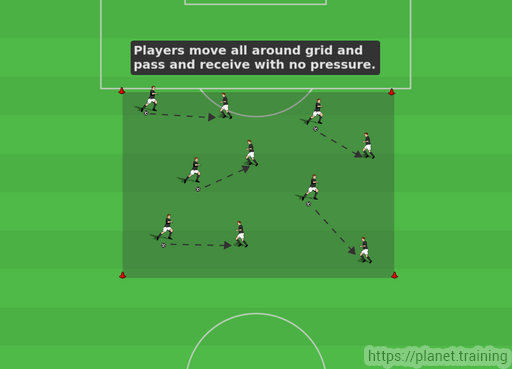
Execution:
This activity is a three step progression of intensity.
The activity begins with each set of partners having a ball. The ball is passed and received only with their own partner. After intervals of passing and receiving with intervals of stretching and range of motion activities the intensity is increased by inserting a set of rabbits (defenders who chase down ball). The rabbits simply attempt to knock the ball of the partner passers out of the grid to eliminate the partners.
The activity momentum increases with the number of defenders that the coach chooses to insert into the grid.
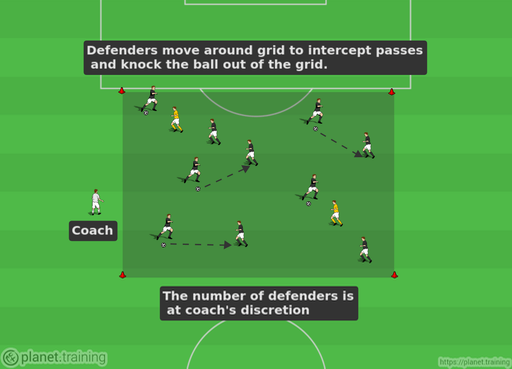
The final progression is where the intensity reaches it's peak. Two sets of partners give up their balls and are joined together by holding onto a towel. The defenders with the towel must work together to tag a player without the ball. This means that the partners who are passing and receiving must pay attention to the defenders with the towel and when their partner is being chased they must get the ball to the partner. Once a player has the ball on their foot they cannot be tagged. If a player is chased out of bounds (grid) then they have been tagged. Once tagged the chasers drop their towel and the tagged player picks up the towel and his partner joins him or her to become the taggers. The former taggers become passers and receivers. It is a continuous game until the coach ends the activity.
Variations:
Goalkeepers can be introduced into the game with the restriction that they pass and receive using their hands to catch.
Activity 2: Two vs. Two Transition
Setup:
Two full size goals are set up 36 yards apart facing each other and players are placed evenly at each post with balls at the right posts of both goals ready to enter into play. Goalkeepers occupy each of the goals.
This activity is extremely demanding!
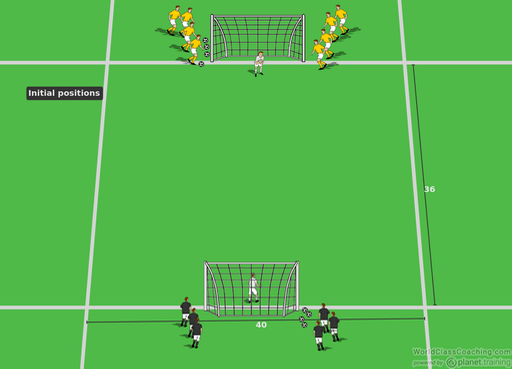
Execution:
Players are paired into twos for the entire duration of the activity and stand behind the goal posts at the same goal. Play is initiated by the yellow partners serving to the black set of partners at the other set of goals. The yellow partners who serve the ball move out to defend the black partners who attempt to score as quickly as possible on the opposing goal.
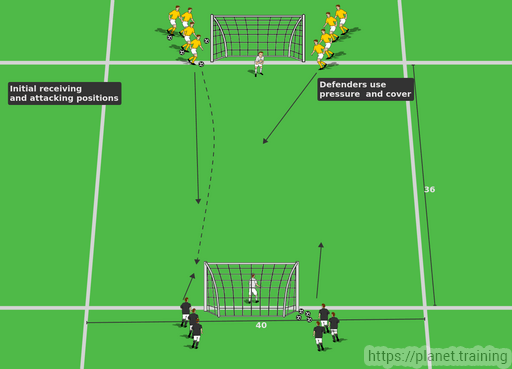
If the black players score or the ball goes over the end line then the black partners must immediately defend the next two yellow players who dribble off the end line and transition to attack the opposite goal as quickly as possible. The two versus two takes place between the two goals with each team trying to win the ball back and attack the opposite goal. Play continues back and forth until a time set by the coach or until a certain number of goals have been achieved by one team.
Variations:
Coach can add flank players for each team who turn the attack into a 3v2 when the play is initiated with a ball to the flank player.
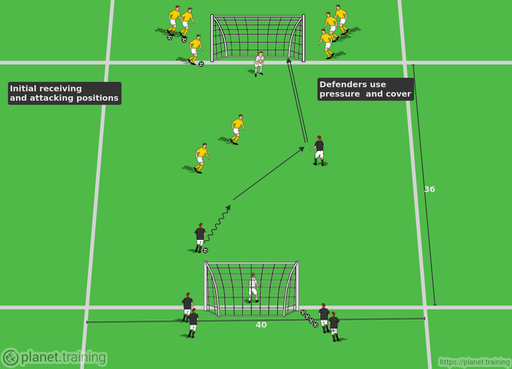
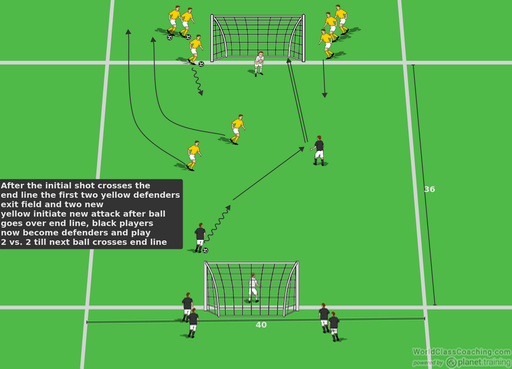
Activity 3: Endless Transition
Setup:
Flat four defense is set up in a functional setting about 10 yards in front of the 18 box. The attackers come in a group of four from the midfield stripe and counter attack goals are also set on the midfield stripe.
8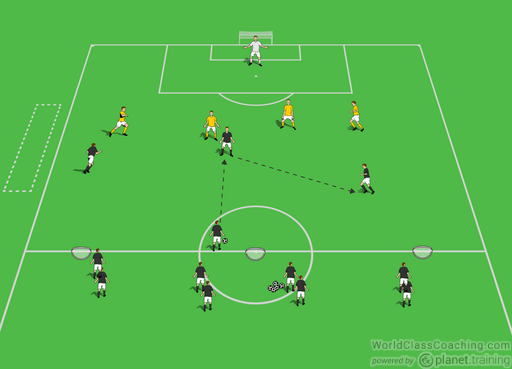
Execution:
Play is started by the four attackers coming from the midfield stripe. Instead of coming as a wave, a forward number nine player should settle in to the flat four line. Wing players can adjust their depth on each attack. If the attacking players are able to attain a shot on goal they gain one point and become the defenders. If they score they gain three points and get to become the defenders. If they turn over the ball to the defenders and the defenders score, the defenders gain three points and get to stay another round. Keep a strict score by group and reward the winners at the end.
By Steven Smith Head Coach at Hope College, Holland, MI


